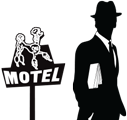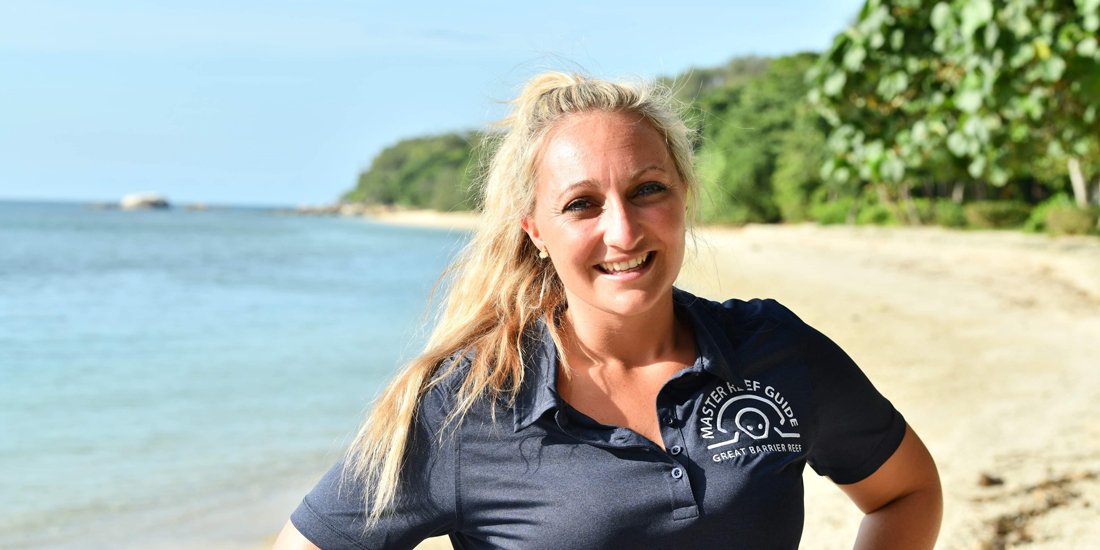Crystal Lacey AKA Little Fish, Master Reef Guide, The Whitsundays
Our united goal is to instill passion and provide educational, interactive and immersive learning of the Great Barrier Reef to create ambassadors for the World Heritage Area ...
On The Weekend Edition’s recent trip to the Whitsundays, we got to hop aboard the Master Reef Guide Outer Barrier Reef Experience, a one-of-a-kind immersive day trip that was part of the Great Barrier Reef Festival. The experience saw a collection of Master Reef Guides come together to share the wonders of the Great Barrier Reef through engaging and educational experiences like snorkel safaris, semi-submersible adventures and in-water photography sessions. Crystal Lacey, better known as ‘Little Fish’, was one of the first people to graduate as a Master Reef Guide and was one of eleven passionate reef experts to embark on the full-day tour exploring this World Heritage-listed wonder off the Queensland coast. We chatted to Crystal, who is also a dive instructor, underwater photographer, reef interpreter and marine educator, about the intimate reef experience, the most surprising things she has seen diving and what we can do to help preserve the global treasure that is the Great Barrier Reef.
To start, we’d like to know a bit more about your role as a Master Reef Guide. In your own words, what are Master Reef Guides?
I have worked within the tourism industry for the last 17 years. Through my years of tourism experience I have established my own business as a tourism development consultant, which is the desired go-to tourism and marine expert throughout the Whitsundays. I provide businesses with the tools they need to ensure every person who visits or hears about the Great Barrier Reef departs as an ambassador for the World Heritage Marine Park. I am also an inaugural Master Reef Guide. I am driven to create innovative immersive educational adaptations to tourism businesses throughout the Great Barrier Reef with an undeniable passion for research, education, and storytelling. Master Reef Guides are the leading reef guides, interpreters and storytellers sharing the wonders of the Great Barrier Reef through engaging, entertaining and educational experiences.
What’s a typical day in the life of a Master Reef Guide?
There are currently 82 Master Reef Guides throughout the entire World Heritage Area. Master Reef Guide’s roles within the Marine Park vary as we all have our unique specialities. Some are in management within tourism businesses, some are front-line staff including skippers, marine biologists, reef interpreters or dive instructors. Collectively each and every day our united goal is to instill passion and provide educational, interactive and immersive learning of the Great Barrier Reef to create ambassadors for the World Heritage Area.
As well as being a Master Reef Guide, you’re also a dive instructor, underwater photographer, eye on the reef surveyor, and a highly trained predatory species surveyor. Can you tell us how you first discovered your passion for the Great Barrier Reef?
I first came to the Whitsundays when I was 15 years old and did my first ever scuba dive and from that moment I knew this was what I wanted to do! So, I moved to Airlie Beach and started my scuba diving course, became the youngest dive instructor in SSI in the world at the time.
You recently took part in the Master Reef Guide Outer Barrier Reef Experience. What was it like having a group of eleven of Australia’s most passionate advocates for the Great Barrier Reef on board the one boat?
This was the first public experience with a group of Master Reef Guides from all over the Great Barrier Reef. The energy on the day was electric! There was so much knowledge and passion and the guests were immersed into the Great Barrier Reef through a variety of never done before educational experiences all included in the day. The guests got to be part of so many activities all led by Master Reef Guides, with activities that were specifically designed by each guide to suit their unique skills.
We spotted lots of marine life like whales, turtles and fish on the Master Reef Guide Outer Barrier Reef Experience. If you had to pick one favourite marine species, what would it be and why?
I don’t think I can have a favourite marine animal, but if I really had to choose it would probably be sharks, as they keep the health on the reef and are majestic and mysterious.
We learnt on our trip to the Whitsundays that most healthy corals come in shades of olive green, brown, tan and pale yellow instead of the typical bright pink or orange we see in movies and in magazines. Are there any other common misconceptions about the Reef?
A healthy reef is approximately 80-percent live coral, this gives room for live coral rock, which is when coral has died, algae grows on the old skeleton of these corals creating a perfect substrate for new baby corals to begin their new life. This is extremely important to highlight as even though a reef will look like there are dead patches, if you look closer there will be new colonies of baby corals beginning their new life continuing on the Great Barrier Reef, like a coral kindergarten.
What’s the most surprising thing you’ve ever seen while diving off the Great Barrier Reef?
There has been many amazing things and there will continue to be many things that will amaze and inspire me, whale sharks are just spectacular! However, so is the courtships of nudibranchs and octopus! When you are snorkelling or scuba diving the key is to go slow, the slower you swim the more you will see and the more the marine life will consider you part of their world and you will be amazed at the mind-boggling things that will happen when you sit and watch the underwater world go by.
What’s one thing that everyday Australians can do to ensure the survival of the Great Barrier Reef for generations to come?
Come and visit the Great Barrier Reef with a Master Reef Guide, with a high-standard tourism operator, learn about the Great Barrier Reef and help to educate the world on how amazing this place is and how important it is to protect it. Simple things to do at home is reduce, reuse and recycle.
If you had a day off to spend in the Whitsundays, where and how would you spend it?
Exploring areas of the reef – there is always more to see and discover!

